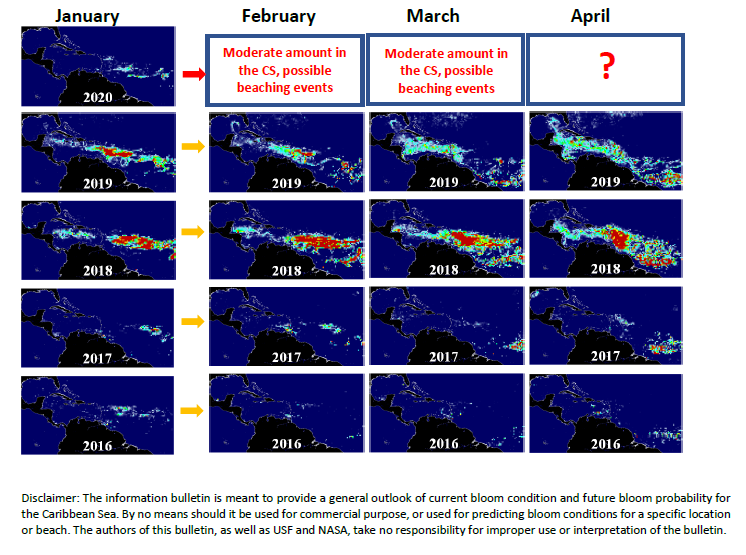The situation in January 2020 has changed dramatically from December 2019. Although the Sargassum amount in the Central West Atlantic (CWA, i.e., the region east of the Lesser Antilles in the maps here) is still low as compared to some bloom years in history (2015, 2018, 2019), there isconsiderable increase from December 2019. In the Central East Atlantic (CEA), Sargassum amount has also increased significantly from December 2019. In other regions Sargassum remains to be minimal; these include the Gulf of Mexico (GOM), Florida Straits, and the Caribbean Sea (CS). In all regionscombined, the total amount increased from 0.4 million metric tons in December 2019 to 1.0 million metric tons in January 2020. This amount is similar to that in January 2017 (1.0 M tons) but lower than in January 2015 (1.7M tons), January 2018 (6.4M tons), or January 2019 (5.0M tons).
Looking ahead, the CS will likely experience moderate amount of Sargassum in February to March 2020. Some of the Lesser Antilles Islands (e.g., Barbados, Tobago, Guadeloupe) may experience some small to moderate beaching events on their windward beaches. This situation may continue into spring, meanwhile we will keep a close eye on how Sargassum in the tropical Atlantic may evolve in the next two months.
More updates will be provided by the end of February 2020, and more information and near real-‐time imagery can be found under the Sargassum Watch System (SaWS, https://optics.marine.usf.edu/projects/saws.html).



